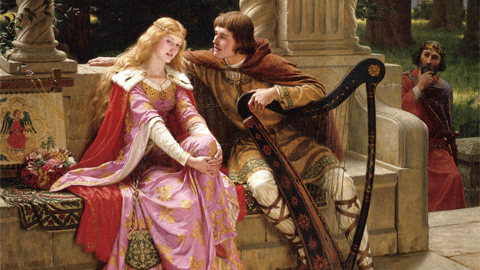Upper secondary students discover Tristan and Isolde at the "Aules compartides"

15/10/2019
On 29 October, the activity "Aules compartides: els alumnes de batxillerat a la UAB" tookplace. The activity is organised by the Occitan Archives (Institute for Medieval Studies) in collaboration with the Faculty of Arts and Humanities. The objective of the activity is to invite upper secondary students to the UAB to take part in an activity with students and teaching staff. On this occasion, the legend of Tristan and Isolde was studied in its opera version by Richard Wagner. This initiative forms part of the celebrations of the 25th anniversary of the UAB's Occitan Archives.
The activity began at 10 a.m. at the Communication Library and General Newspaper Archives, where students from the Institut Domènech i Montaner (Barcelona) were welcomed by Professor Antoni Rossell, Director of the Occitan Archives, and by students from the subject Introduction to Medieval Romance Cultures and Literatures. All together they then went to the Cinema Hall at the Plaça Cívica, where fragments of Wagner's opera Tristan und Isolde were projected. The event ended with a conference entitled "Tristan and Isolde and the Medieval Tradition, History and Transformation of a Legend", which took place at the boardroom of the Faculty of Arts and Humanities at 11:30 a.m.
The love story between Cornish knight Tristan and Irish princess Isolde is one of the legends closely related to the tales of King Arthur. Several medieval sources mention the legend, which was popularised in part by the opera version created by Wagner, composed between the years 1857 and 1859, and considered to be one of the German composer's most acclaimed pieces.
More information:
Occitan Archives